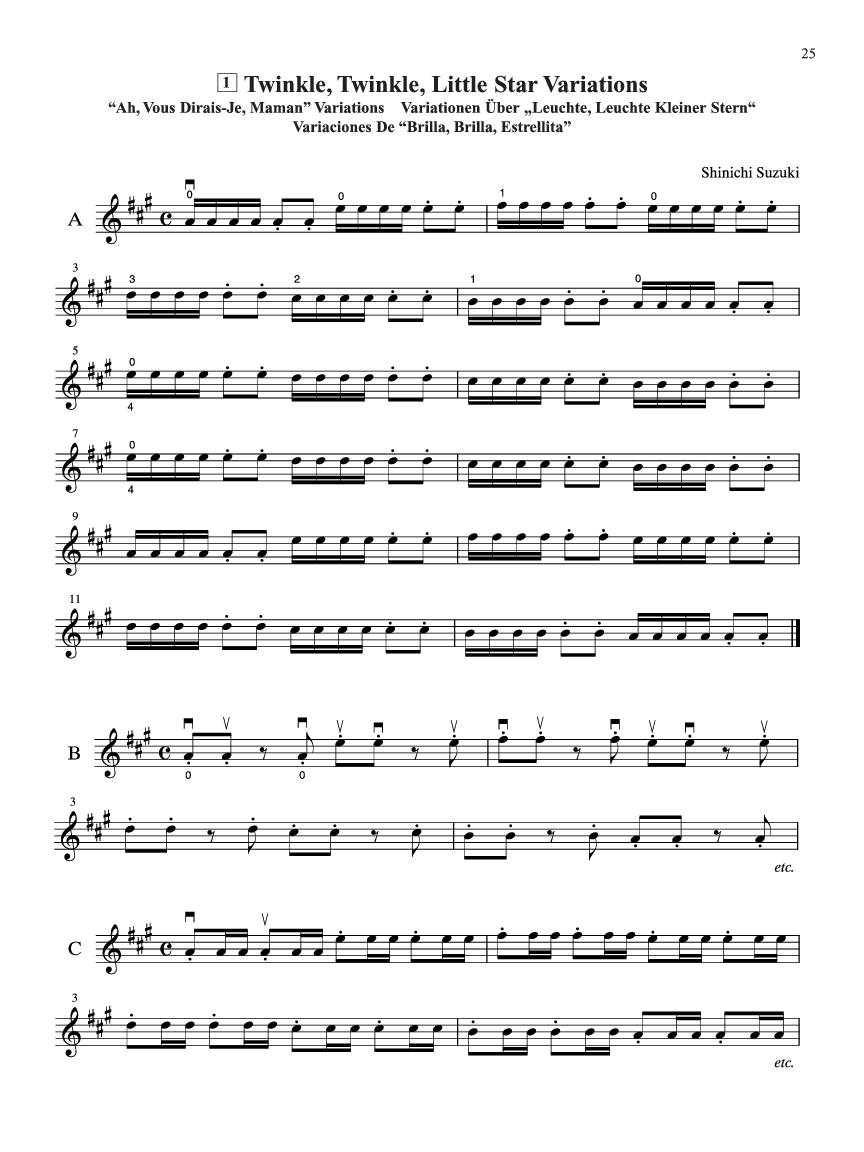Suzuki Method Violin Book 1 Free Download
Pada kali ini saya akan membagikan buku 'Suzuki Violin Method' yang merupakan salah satu buku metode pembelajaran biola yang cukup umum banyak digunakan para student. Anda dapat mendapatkan file PDF, MIDI,dan MP3 secara gratis dan lengkap.
Caranya: cukup click pada link dibawah ini.
Jul 21, 2018 Check out Suzuki Violin School, Vol. 1 by William Preucil on Amazon Music. Stream ad-free or purchase CD's and MP3s now on Amazon.com. Full line of Suzuki Method Materials in stock. Enjoy FREE 2-4 Day Shipping on your order of $30 or more! (48 contiguous states only).
Twinkle Twinkle LittleStar Variations
Lightly Row
Song of the Wind
Go Tell Aunt Rhody
Oh Come, Little Children
May Song
Long, Long Ago
Allegro
Perpetual Motion
Allegretto
Andantino
Etude
Minuet 1
Minuet 2
Minuet 3
The Happy Farmer
Gavotte
Chorus
Hunters' Chorus
Waltz
The Two Grenaidiers
Gavotte from 'Mignon'
Minuet in G
Musette
Long, Long Ago
Bourree
Witches' Dance
Gavotte - J.B. Lully
Minuet - L. Boccherini
Violin Book Pdf

| Semoga file-file diatas dapat bermanfaat untuk kemudahan belajar kita semua. | |||||||||||||||||||||||||||||||
| Semoga Bermanfaat Samuel Adinugraha Terima Kasih | |||||||||||||||||||||||||||||||
Suzuki Method Violin Book 1 Free Download For Pc
The Suzuki Method: Every Child Can Learn
More than fifty years ago, Japanese violinist Shinichi Suzuki realized the implications of the fact that children the world over learn to speak their native language with ease. He began to apply the basic principles of language acquisition to the learning of music, and called his method the mother-tongue approach. The ideas of parent responsibility, loving encouragement, constant repetition, etc., are some of the special features of the Suzuki approach.
Parent Involvement
As when a child learns to talk, parents are involved in the musical learning of their child. They attend lessons with the child and serve as “home teachers” during the week. One parent often learns to play before the child, so that s/he understands what the child is expected to do. Parents work with the teacher to create an enjoyable learning environment.
Early Beginning
The early years are crucial for developing mental processes and muscle coordination. Listening to music should begin at birth; formal training may begin at age three or four, but it is never too late to begin.
Listening
Children learn words after hearing them spoken hundreds of times by others. Listening to music every day is important, especially listening to pieces in the Suzuki repertoire so the child knows them immediately.
Repetition
Constant repetition is essential in learning to play an instrument. Children do not learn a word or piece of music and then discard it. They add it to their vocabulary or repertoire, gradually using it in new and more sophisticated ways.
Encouragement
As with language, the child’s effort to learn an instrument should be met with sincere praise and encouragement. Each child learns at his/her own rate, building on small steps so that each one can be mastered. Children are also encouraged to support each other’s efforts, fostering an attitude of generosity and cooperation.
Learning with Other Children
In addition to private lessons, children participate in regular group lessons and performance at which they learn from and are motivated by each other. Graded Repertoire Children do not practice exercises to learn to talk, but use language for its natural purpose of communication and self-expression. Pieces in the Suzuki repertoire are designed to present technical problems to be learned in the context of the music rather than through dry technical exercises.
Delayed Reading
Children learn to read after their ability to talk has been well established. in the same way, children should develop basic technical competence on their instruments before being taught to read music.
NOTE: The only difference between the International and Revised Editions is the Foreword. The piece selection, markings, notes, etc. are identical.